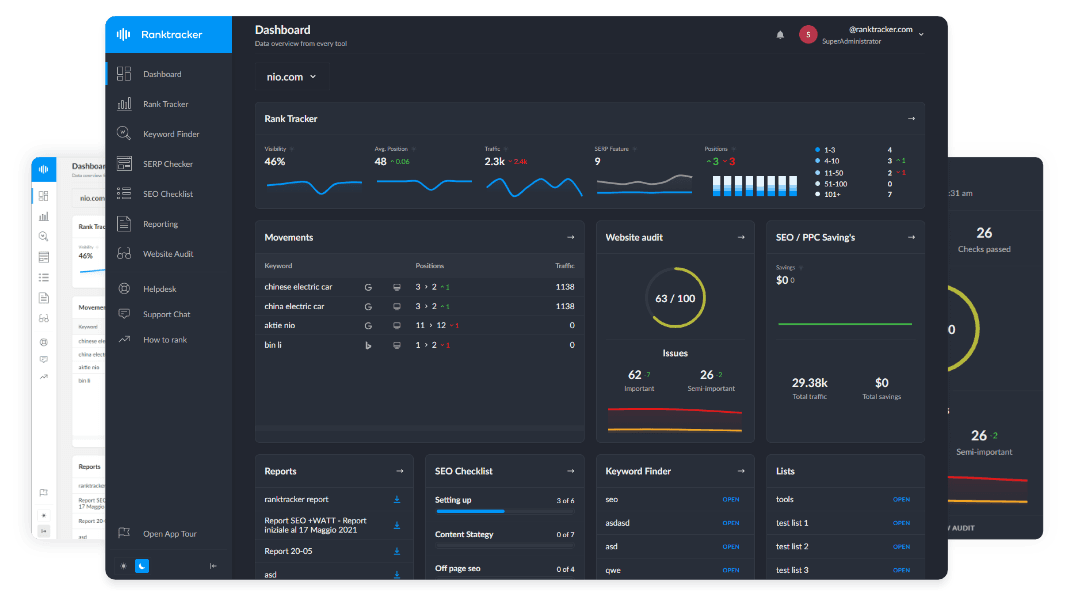Intro
Data is the backbone of online marketing. But anyone who has worked with web analytics tools like Google Analytics 4 or Matomo knows the challenge: the overwhelming number of metrics can quickly become confusing. Companies risk analyzing too much or the wrong data—and lose focus in the process. So how can web analytics be conducted efficiently? The answer lies in a clearly structured approach using the right KPIs.
Why Web Analytics Is Essential for Businesses
Running online marketing campaigns without reliable data is like driving through fog. Companies need to know which campaigns are successful, which content resonates, and where there is room for improvement. Web analytics provides not just numbers, but also the foundation for strategic decisions. However, this requires first identifying the right KPIs (Key Performance Indicators). Which metrics are truly relevant depends heavily on the specific business goals.
In general, analysis should focus on the most important KPIs that make the success of a website or campaign measurable. The rule of thumb: fewer but more meaningful metrics are better than drowning in a sea of irrelevant data.
Core Metrics to Get Started
While the choice of the right metrics always depends on individual business goals, the following core KPIs are relevant for most digital strategies:
- Bounce Rate: Indicates how many users leave the site without interacting. Helps identify underperforming pages or content.
- Average Session Duration: Measures how long users stay on your website—a sign of content relevance.
- Pages per Session: Reflects navigation quality and the effectiveness of internal linking.
- Conversion Rate: The most business-critical metric: How many users complete a desired action (e.g., purchase, signup)?
These metrics provide a strong foundation for understanding user behavior. But numbers alone aren’t enough—they must also be interpreted in context.
The Art of Interpretation: Context Is Key
Metrics are often viewed in isolation. But only when examined in relation to other factors do they yield actionable insights. For example, a long session duration isn’t always positive. If users spend a lot of time on a page but don’t convert, it may point to poor usability or unclear CTAs.
The same goes for bounce rate. A high bounce rate on a blog post doesn’t necessarily mean the content is bad—it could simply mean the visitor found exactly what they needed and left satisfied.
Real-World Example: A SaaS company noticed a high average time on its pricing page but a low conversion rate. A user survey revealed that the information was overly complex. After restructuring the page and simplifying the language, conversions increased by 35% without changing the page traffic.
Strategic data analysis means looking beyond standalone KPIs. Combining metrics helps reveal valid patterns. For instance, many page views per session with low conversions may point to poor site navigation.
How Often Should You Analyze Web Data?
One common question is how frequently analytics should be conducted. Gone are the days of receiving a monthly performance report via email. With real-time data, marketers can monitor results continuously. However, constant deep-dives aren’t always necessary. Here’s a general guideline:
- Campaign Data: During an active campaign, daily tracking can uncover trends early.
- SEO and Organic Traffic: Weekly or monthly reviews are sufficient due to slower trends.
- Newsletter Performance: Daily checks in the first few days post-send, then a summary after one to two weeks.
Pro Tip: Use tools like Ranktracker to continuously monitor keyword visibility and page performance. This is especially helpful for long-term SEO monitoring.
Recommended Tools for Web Analytics
Google Analytics 4 dominates the market with around 80% share. It offers in-depth user behavior insights and integrates well with Google Ads. For those prioritizing data privacy, Matomo is a strong open-source alternative with server-side tracking.
Additional tools like Hotjar (for heatmaps), Optimizely (for A/B testing), and Ranktracker (for SERP monitoring, keyword rankings, and competitive insights) enhance the granularity of your data and help link SEO with user experience.
The All-in-One Platform for Effective SEO
Behind every successful business is a strong SEO campaign. But with countless optimization tools and techniques out there to choose from, it can be hard to know where to start. Well, fear no more, cause I've got just the thing to help. Presenting the Ranktracker all-in-one platform for effective SEO
We have finally opened registration to Ranktracker absolutely free!
Create a free accountOr Sign in using your credentials
Tool Stack Example: A mid-sized company implemented Google Analytics, Ranktracker, and Hotjar. The combination of traffic data, keyword tracking, and on-page user interaction helped them optimize their checkout process. The result: a 20% decrease in cart abandonment in just three months.
AI in Web Analytics: The Future Is Here
Artificial intelligence is increasingly shaping how data is analyzed. Google Analytics 4 already uses machine learning to identify trends and suggest actions. AI-powered analytics can predict bounce risks or forecast product demand.
Tools like Ranktracker also offer automated alerts and trend recognition, enabling businesses to react to search behavior changes early. These insights help optimize campaigns, reduce wasted spend, and boost ROI.
Case Study: Real-World KPI Strategy in E-Commerce
An online retailer specializing in sustainable fashion wanted to determine which marketing channels actually generated revenue. With UTM tracking, Ranktracker, and a data-driven attribution model, they examined their full customer journey. The surprising result: Most sales came not from paid social ads, but from organic product searches.
They reallocated budget from paid ads to SEO and content. After six months:
- +45% organic traffic
- +18% conversion rate
- -22% ad spend
Conclusion: Use Web Analytics as a Strategic Tool
Web analytics is more than just collecting numbers – it’s about using data to make better decisions. The key is to avoid viewing metrics in isolation. Combine them, look for correlations, and extract actionable insights.
By applying a structured approach to KPIs, using smart tools, and embracing AI-supported platforms like Ranktracker, businesses can turn raw data into real competitive advantages.
Quick Checklist for Marketers:
- Have I clearly defined my core KPIs?
- Do I combine multiple metrics for deeper insight?
- Am I using tools like Ranktracker to anticipate trends?
- Are reports reviewed regularly and turned into action?
If you can answer “yes” to most of these, you're on the right track. If not—now is the time to start.
Note: If you're looking to build your web analytics skills further (in German language), consider one of the practical training courses offered by the eMBIS Academy for Online Marketing.

